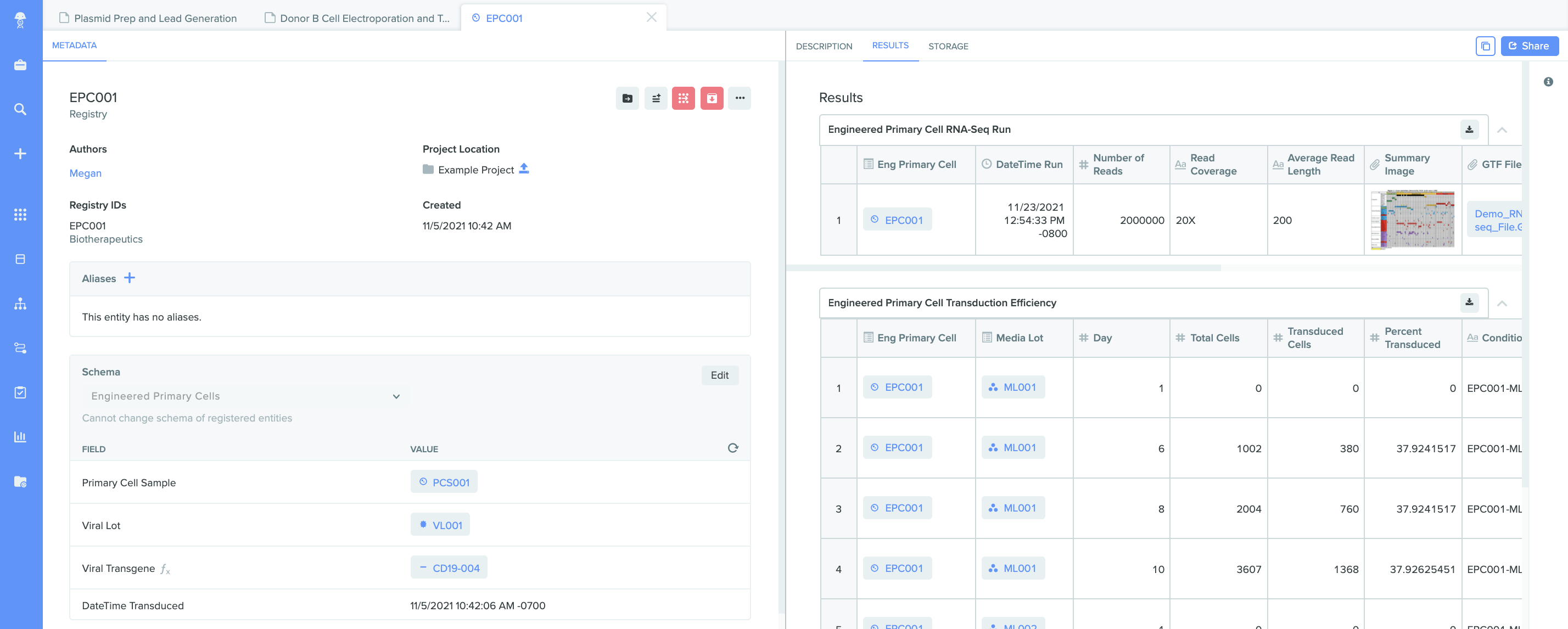Accelerate your next cell therapy breakthrough with these four essential R&D capabilities
Cell therapies are shifting the paradigm of treatment for a wide range of unmet medical needs. These cutting-edge treatments have been revolutionizing hematological cancer care since 2017, when pivotal CAR-T approvals of Kymriah and Yescarta produced remarkably effective clinical responses. Following the success of these initial FDA approvals, the cell therapy field has grown rapidly: today, more than 1,358 such molecules are in clinical trials, with another 2,070 in development.
While cell therapies hold significant promise, certain challenges regarding their safety, durability of patient response, and manufacturing processes need to be addressed before these treatments can achieve broader clinical utilization. This field is exploring new scientific methods, process technologies and collaboration models to overcome these challenges. To leverage these new developments, software solutions supporting cell therapy R&D need to stay in sync with evolving technologies.
Benchling is an adaptable and user-friendly platform designed for the rapidly evolving needs of cell therapy R&D. Unlike legacy software, Benchling has the ability to:
Model the underlying science
Track each sample’s genealogy from the donor material
Manage the large volume of data produced in cell therapy R&D
Provide a foundation for inter-team collaboration.
We have worked with more than 160 cell therapy companies, and have established best implementation practices and expertise to set you up with a solid foundation for your R&D. Here, we outline how Benchling’s R&D cloud enables biopharmaceutical organizations to accelerate their cell therapy R&D processes—and bring more breakthrough therapies to clinics, faster.
Four essential Benchling capabilities for cell therapy R&D
1. Benchling provides a foundation for modeling, designing and testing all binders and constructs
As new therapeutic modalities emerge, organizations need to manage an ever expanding array of cell-based entities and DNA constructs for CAR-Ts, TCRs, and stem cells. However, most current registry systems were originally designed to handle small molecules and are now being repurposed to manage cell therapies. This means they are inherently unable to effectively model the molecular complexity of cell therapies, or the relationships between the final cell products and the various components (e.g. constructs, plasmids, virus) used to produce them.
Benchling, on the other hand, provides a comprehensive Molecular Biology capability tailor-made to design DNA, CRISPR gRNAs, and amino acid sequences. This connects to a flexible Registry designed to manage the full range of cell-based entities used in cell therapy research. What’s more, Benchling’s Molecular Biology, Registry, Notebook, and Inventory capabilities work seamlessly together to help teams optimally design, register, and organize the physical locations and experiment history of each entity and sample.
For example, Obsidian Therapeutics is using a proprietary platform to engineer effective and safe tumor-infiltrating lymphocyte (TIL) therapies for solid tumors. They replaced their legacy tech with Benchling’s Notebook, Registry, and Molecular Biology, enhancing the rigor and reliability of their experimental records. With the help of Benchling’s unified platform, scientists at Obsidian are now able to easily model a wide variety of constructs and associate experimental context and data with each of them. This helps researchers extract insights that guide them in selecting the best virus lot, and understanding why it works well in relation to a specific batch of TIL constructs. Best of all, Benchling enables them to do all this within a single platform.
Hear how Benchling's integrated sample tracking and note taking generates strong user adoption and simplifies IP filings at Obsidian.
2. Benchling streamlines collaboration across teams, sites, and partners to fuel innovation
As scientists isolate, process, and produce cells, they need to be able to efficiently characterize the quality and consistency of products at each stage. However, teams often use spreadsheets and emails to manage sample handoffs and characterization requests, creating bottlenecks as experimental results are relayed back through emails or data storage solutions like GDrive, Box, and SharePoint. As a result, organizations end up storing critical information in multiple locations, which leads to inefficiencies.
Benchling provides a suite of unified cloud-based capabilities with process management tools to solve this problem. With Benchling, cell therapy R&D teams can orchestrate smooth handoffs between binder discovery, viral vector production, analytical, and cell engineering teams. Benchling also houses all R&D data and information in one place so team members can easily co-author and share it with key stakeholders. In all these ways, Benchling’s platform simplifies real-time data sharing and collaboration across departments.

Scientists hand off plasmids, cell lines, and reagents between teams, and share data and results with built-in collaboration tools.
At Rubius Therapeutics, for example, researchers are using Benchling Workflows, Registry, and Requests to link DNA sequences to downstream lentivirus batches. As Rubius develops red blood cell therapeutics for a variety of diseases, they’re finding that Benchling centralizes project management and strengthens collaboration between biology and cell engineering teams, so decision makers can track, resource, and prepare for cell production in real time.
“Benchling is a very powerful system. The one thing I’ve heard from most of the scientists is that it’s more powerful than they realize all the time.”
—Tiffany Chen, Director of Discovery @ Rubius Therapeutics
3. Benchling creates a central repository of information—helping scientists make smarter, faster decisions
Every component of the cell therapy product—from sequences to constructs to vectors—needs to be characterized before a lead candidate can be selected and developed further. After the cell therapy products have been created, they need to be characterized using multi-omics approaches due to their inherent heterogeneity, which results in very large datasets. But while many labs still rely on desktop molecular design tools, paper notebooks, and spreadsheets to manage this enormous volume of R&D data, these tools are highly cumbersome, and create data silos that delay or even obscure data-driven decisions.

Scientists and executives track critical cell therapy attributes across studies, optimize processes, and monitor inventory of critical reagents with customizable reports and dashboards.
Benchling breaks down silos by centralizing all R&D data—enabling organizations to make smarter and faster decisions across all scientific and operational realms. The Insights capability, for example, can aggregate data both within and across programs, using dashboards to help scientists discover key trends for optimizing construct design, cell engineering, and production processes. Data science and analytical teams can also conduct custom multivariate analysis by integrating analysis tools, such as Spotfire or Tableau, with our Data Warehouse. As a result, scientists can transform R&D data into actionable insights that drive results throughout the pipeline faster than ever.
For example, Sana Biotechnology is designing cell therapies from stem cells using a unique combination of technologies. With Benchling, they have connected R&D data from more than 20 teams and have been able to effectively scale and accelerate based on the insights they’ve extracted. This was instrumental in helping Sana develop a strong pipeline of 11 different therapeutic candidates just three years after being founded. By centralizing their R&D data in Benchling, Sana has set up a solid foundation for their ongoing and future growth.
“Sana’s global R&D teams now focus on developing our platforms and pipeline... designing the right experiments and finding the insights that reside within our data.”
—Steve Harr, CEO and Co-Founder @ Sana Biotechnology
4. Benchling supports end-to-end sample and process traceability, reducing risk and ensuring compliance for regulatory purposes.
For personalized therapies, such as cell therapy, it’s crucial for scientists to track the genealogy of the donor cellular material—from its acquisition and genetic modifications all the way to production. However, this is often difficult or takes months to complete when internal vector production, analytical, and cell engineering teams all use different software tools like spreadsheets, emails, and paper notebooks to track their individual components. Failure to demonstrate full traceability can delay timelines for IP or regulatory filings—or worse, lead to a warning letter from a regulatory agency.
Benchling addresses this issue by capturing the nuances of each company’s science and processes within a single system. Registry tracks each edit made to every donor cell and cell line, and it keeps a record of who made the edits by using audit logs, smart links, and parent-child relationships. The Benchling platform also interlinks all experimental context and analytical data for each construct, vector, and engineered cells—providing complete end-to-end traceability within a single seamless interface.

Scientists can easily trace the sample lineage back to the donor lot and associated data and experimental context with a few clicks.
Take Adicet Bio for example. Benchling enables Adicet to store, share, and interlink all the experimental data on every sample, vector, and engineered red blood cell they create. This traceability allows Adicet’s scientists to effortlessly navigate from sequences to prototype backgrounds to experimental conditions. What’s more, Adicet’s biology teams can request information on prototypes, the cell engineering teams will then receive and execute on these requests, and the cells are then referred back to the original teams for processing—all within a single, unified platform. Adicet feels confident that Benchling provides an ideal solution for tracking each candidate molecule as it moves from discovery to development.
“Ultimately what Benchling is going to allow Adicet to do is to move rapidly into the clinic with life-saving therapies, and it has set up the company for long-term success in the future.”
—Jeanette Grant, Associate Director for Project Management @ Adicet Bio
Accelerate Gene Therapy R&D with the Benchling R&D Cloud
The needs of the modern cell therapy R&D organization range from modeling to big data management, cross-functional collaboration to process traceability. In order to develop life-saving therapies at an accelerated pace and bring them into the clinic, cell therapy R&D organizations need a software system that can map the entirety of complex cell engineering workflows. At the same time, these systems need to maintain flexibility and connectivity as processes evolve and organizational or program needs change. Learn how you can accelerate your next cell therapy breakthrough with Benchling’s R&D Cloud.
